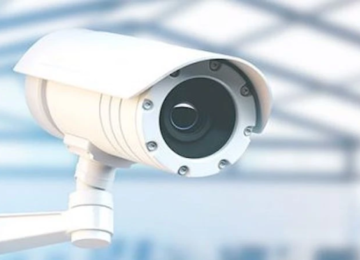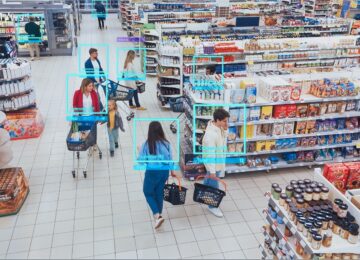The Hidden Cost of Recurrent Shoplifting: How to Protect Multiple Units

Recurrent theft poses a significant challenge for managers overseeing multi-units, particularly in the retail food sector. Though seemingly minor on an individual level, recurrent thefts by habitual offenders quickly add up, significantly impacting overall profitability. In this article, we explore the hidden costs of recurrent shoplifting, the unique challenges it presents for multi-unit operators, and how modern solutions can mitigate these losses.
1. Recurrent Shoplifting: A Cumulative Problem
Recurrent shoplifting is challenging to quantify but directly impacts profitability. While isolated theft incidents may be manageable, habitual thieves repeatedly targeting one or more units often possess detailed knowledge of operational vulnerabilities.
Why is recurrent theft problematic for multi-unit operators?
- Habitual Behavior: Repeat thieves exploit less monitored areas, utilizing predictable patterns to evade detection.
- Complex Tracking: Multi-unit operations often involve varied security systems across locations, complicating unified tracking and incident management.
- Invisible Losses: Frequent small-scale thefts may seem negligible initially but cumulatively represent substantial financial drain.
2. The Hidden Costs of Recurrent Theft Across Multiple Units
The hidden costs of recurrent theft extend far beyond direct merchandise losses, encompassing several indirect financial burdens for multi-unit operators.
2.1. Cost of Replacing Stolen Goods
Each stolen product requires immediate replacement, directly increasing operating costs. For multi-unit operations, frequent replenishment can quickly escalate expenses.
Example of Losses: Consider recurrent theft of grocery items valued at €5 each. A single habitual thief taking 10 items weekly over six months would result in $1,200 loss per unit ($5 x 10 items x 4 weeks x 6 months). Across 10 units, this accumulates to $12,000.
2.2. Security Management Costs
To combat recurrent theft, multi-unit operators must invest in sophisticated security technologies and additional personnel, substantially elevating operational expenses.
Example: Investing in enhanced video surveillance or intelligent detection technology across multiple units can cost several thousand euros per year per location.
2.3. Impact on Customer Experience
Enhanced security measures, while effective, can negatively impact the customer experience. Increased surveillance and intrusive security devices can create an atmosphere of mistrust, diminishing customer loyalty.
Indirect Impact: A compromised shopping experience can lead to reduced customer retention, negatively affecting long-term revenue.
Read more: Your Security Helping or Hindering Your Customer Experience
2.4. Increased Insurance Premiums
Multi-unit operators with high theft frequencies risk increased insurance premiums, as insurance providers raise rates for operations deemed high-risk.
3. Strategies to Reduce Losses from Recurrent Theft
To effectively mitigate recurrent theft losses, multi-unit operators should adopt proactive and technology-driven strategies:
3.1. Intelligent Surveillance and Real-Time Detection
Employing advanced technologies, such as intelligent cameras and artificial intelligence (AI), can proactively identify suspicious activities in real-time, significantly reducing theft opportunities.
Example Solution: AI-powered alert systems can detect theft attempts instantly, enabling rapid response from security personnel.
3.2. Continuous Staff Training
Ongoing staff training is critical for identifying and effectively responding to habitual thieves, fostering vigilance and proactive security awareness among employees.
3.3. Securing Vulnerable Areas
High-risk items (popular products, smaller sizes, high-value goods) should be protected using dedicated security solutions, such as anti-theft labels, electronic locks, or secured displays.
3.4. Centralized Security Data Management
Multi-unit operators benefit from centralized security data platforms that streamline monitoring and management of theft incidents across all locations.
Read more: Harmonizing Security Practices Across Multi-Unit Operations for Maximized ROI
Conclusion: The Importance of a Proactive Approach
Recurrent shoplifting can generate significant financial strain beyond direct product losses. Hidden expenses—including degraded customer experiences, elevated insurance premiums, and increased security expenditures—must be accounted for when evaluating the true impact.
Proactive measures leveraging intelligent technologies, employee training, and targeted security enhancements are essential for reducing recurrent theft and protecting profitability across your multi-unit operations.
Contact us today to discover how Veesion can help minimize recurrent theft losses and effectively secure your multi-unit operation.
The most popular
Related news
Discover what Veesion can do for you. Do you have one or more stores?
Our team will contact you within 48 hours





